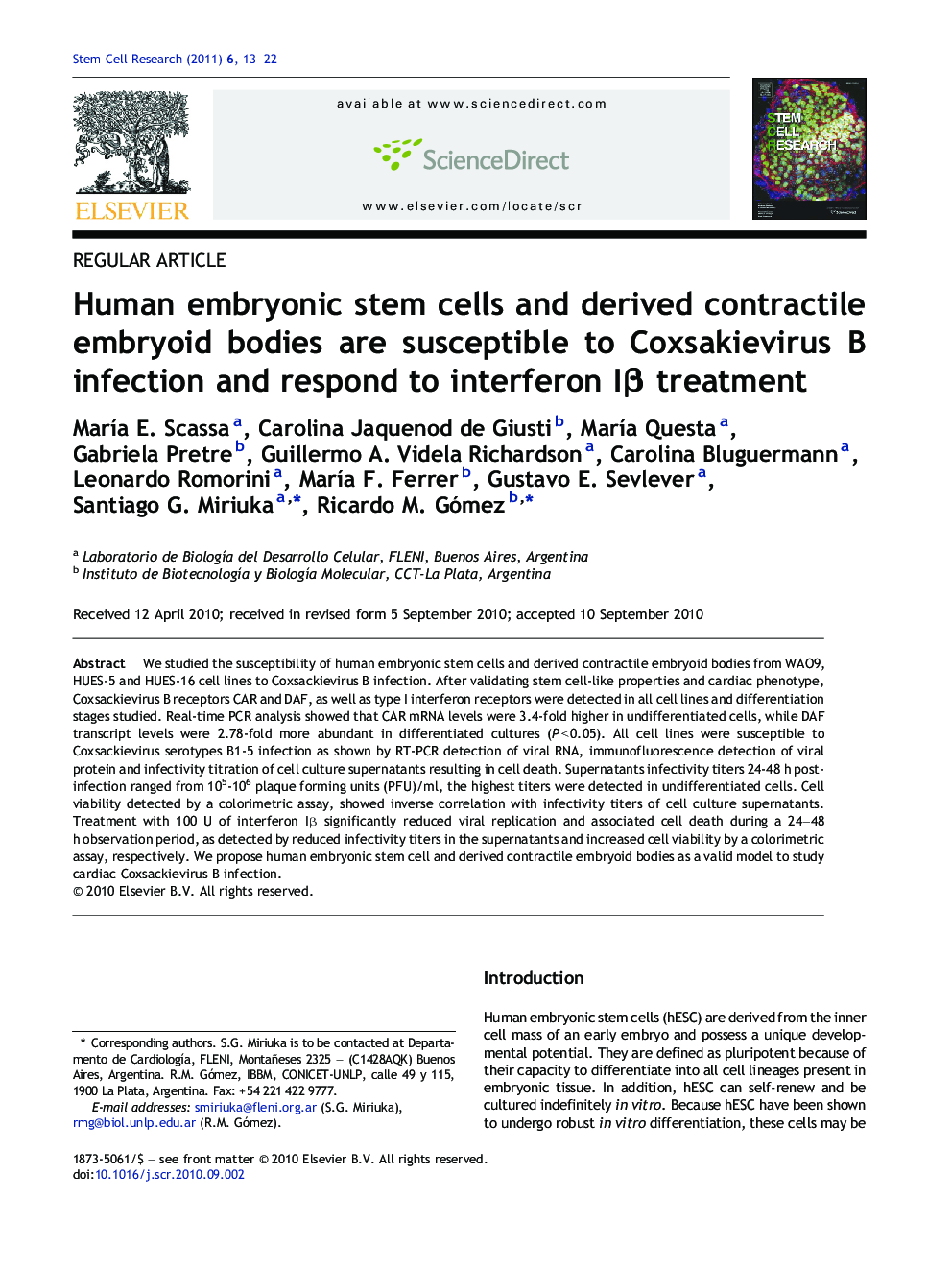| Article ID | Journal | Published Year | Pages | File Type |
|---|---|---|---|---|
| 10891345 | Stem Cell Research | 2011 | 10 Pages |
Abstract
We studied the susceptibility of human embryonic stem cells and derived contractile embryoid bodies from WAO9, HUES-5 and HUES-16 cell lines to Coxsackievirus B infection. After validating stem cell-like properties and cardiac phenotype, Coxsackievirus B receptors CAR and DAF, as well as type I interferon receptors were detected in all cell lines and differentiation stages studied. Real-time PCR analysis showed that CAR mRNA levels were 3.4-fold higher in undifferentiated cells, while DAF transcript levels were 2.78-fold more abundant in differentiated cultures (P < 0.05). All cell lines were susceptible to Coxsackievirus serotypes B1-5 infection as shown by RT-PCR detection of viral RNA, immunofluorescence detection of viral protein and infectivity titration of cell culture supernatants resulting in cell death. Supernatants infectivity titers 24-48 h post-infection ranged from 105-106 plaque forming units (PFU)/ml, the highest titers were detected in undifferentiated cells. Cell viability detected by a colorimetric assay, showed inverse correlation with infectivity titers of cell culture supernatants. Treatment with 100 U of interferon Iβ significantly reduced viral replication and associated cell death during a 24-48 h observation period, as detected by reduced infectivity titers in the supernatants and increased cell viability by a colorimetric assay, respectively. We propose human embryonic stem cell and derived contractile embryoid bodies as a valid model to study cardiac Coxsackievirus B infection.
Related Topics
Life Sciences
Biochemistry, Genetics and Molecular Biology
Biotechnology
Authors
MarÃa E. Scassa, Carolina Jaquenod de Giusti, MarÃa Questa, Gabriela Pretre, Guillermo A. Videla Richardson, Carolina Bluguermann, Leonardo Romorini, MarÃa F. Ferrer, Gustavo E. Sevlever, Santiago G. Miriuka, Ricardo M. Gómez,
